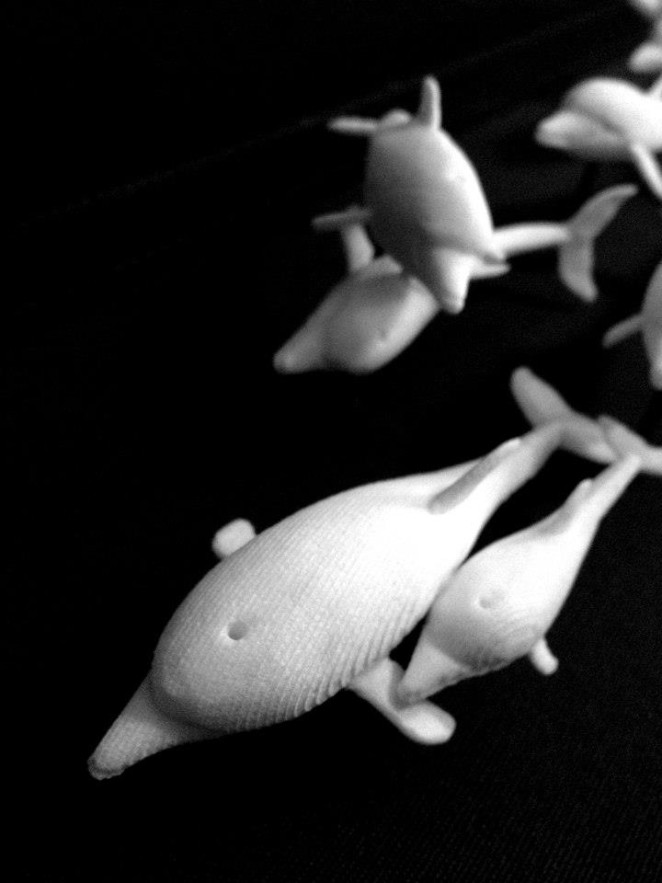Burrunan Dolphin Pod
Dolphins in Port Phillip Bay
Swim alongside playful dolphins and seals, or take a Port Phillip Bay cruise and watch as these frisky, friendly mammals frolic beside your boat.
Stand on the shore of the bay and get a glimpse of dolphins that you won’t see anywhere else, including bottlenose dolphins along with the common variety. If you’re after a closer look, join a bay cruise run by specially licensed operators or look out for dolphins hitching a ride on the bow wave ahead of the Sorrento Car And Passenger Ferry to and from Queenscliff.
MELBOURNE’S dolphins have officially been recognised as being in a class of their own. Originally thought to be one of the two recognised bottlenose dolphin species, Port Phillip Bay’s dolphins have now been confirmed as a new species.
The findings, revealed yesterday in the peer-reviewed scientific journal PLoS ONE, means southern Australia is actually home to three species of bottlenose dolphin.
While she had long suspected this, it took Monash University PhD researcher Kate Charlton-Robb eight years to prove her case.
To do it, she compared the DNA, skull features and appearance of Port Phillip Bay’s dolphins with other species to establish the coastal dolphins differed from all other dolphins worldwide.
Advertisement
Named Tursiops australis, the new species common name will be the Burrunan dolphin, after an Aboriginal word meaning ”large sea fish of the porpoise kind”.
Ms Charlton-Robb said that compared to the common bottlenose and the Indo-Pacific bottlenose dolphins, the Burrunan dolphin had a smaller skull and beak as well as a difference in bone structure in the skull. At 2.5 metres long, the new species is smaller than the three-metre common bottlenose dolphin and its three-toned colouring is also unique.
Port Phillip Bay’s dolphins show they’re definitively a class act
Burrunan dolphins are shorter than the common bottlenose dolphin and their three-toned colouring is also unique.
Burrunan dolphins are shorter than the common bottlenose dolphin and their three-toned colouring is also unique. Photo: Rebecca Hallas
MELBOURNE’S dolphins have officially been recognised as being in a class of their own. Originally thought to be one of the two recognised bottlenose dolphin species, Port Phillip Bay’s dolphins have now been confirmed as a new species.
The findings, revealed yesterday in the peer-reviewed scientific journal PLoS ONE, means southern Australia is actually home to three species of bottlenose dolphin.
While she had long suspected this, it took Monash University PhD researcher Kate Charlton-Robb eight years to prove her case.
To do it, she compared the DNA, skull features and appearance of Port Phillip Bay’s dolphins with other species to establish the coastal dolphins differed from all other dolphins worldwide.
Advertisement
Named Tursiops australis, the new species common name will be the Burrunan dolphin, after an Aboriginal word meaning ”large sea fish of the porpoise kind”.
Ms Charlton-Robb said that compared to the common bottlenose and the Indo-Pacific bottlenose dolphins, the Burrunan dolphin had a smaller skull and beak as well as a difference in bone structure in the skull. At 2.5 metres long, the new species is smaller than the three-metre common bottlenose dolphin and its three-toned colouring is also unique.
”They’re quite distinct from the larger bottlenose dolphins,” she said. ”And the DNA is very distinct, with its own particular sequence.”
However, while a difference in appearance had been noted historically, often it was put down to variations between male and female.
Among the museum samples used in the study was one that dated to 1915. Originally identified as a female common bottlenose, DNA testing and skull morphology confirmed it was a Burrunan dolphin.
”That’s been one of the great things,” Ms Charlton-Robb said. ”These guys have been living under our noses, but this also showed that they’ve been here for a while.”
About 100 Burrunan dolphins live in Port Phillip Bay and they are also found in the Gippsland Lakes, where they number about 50. The small population has implications for genetic diversity of the species and Ms Charlton-Robb said she was keen to get the Burrunan dolphin listed as a threatened species.
”We’ll be making all the efforts to try to conserve and protect them and get them listed,” she said. ”But that’s the next step.”
Just three new dolphin species have been formally described and recognised since the late 1800s.








